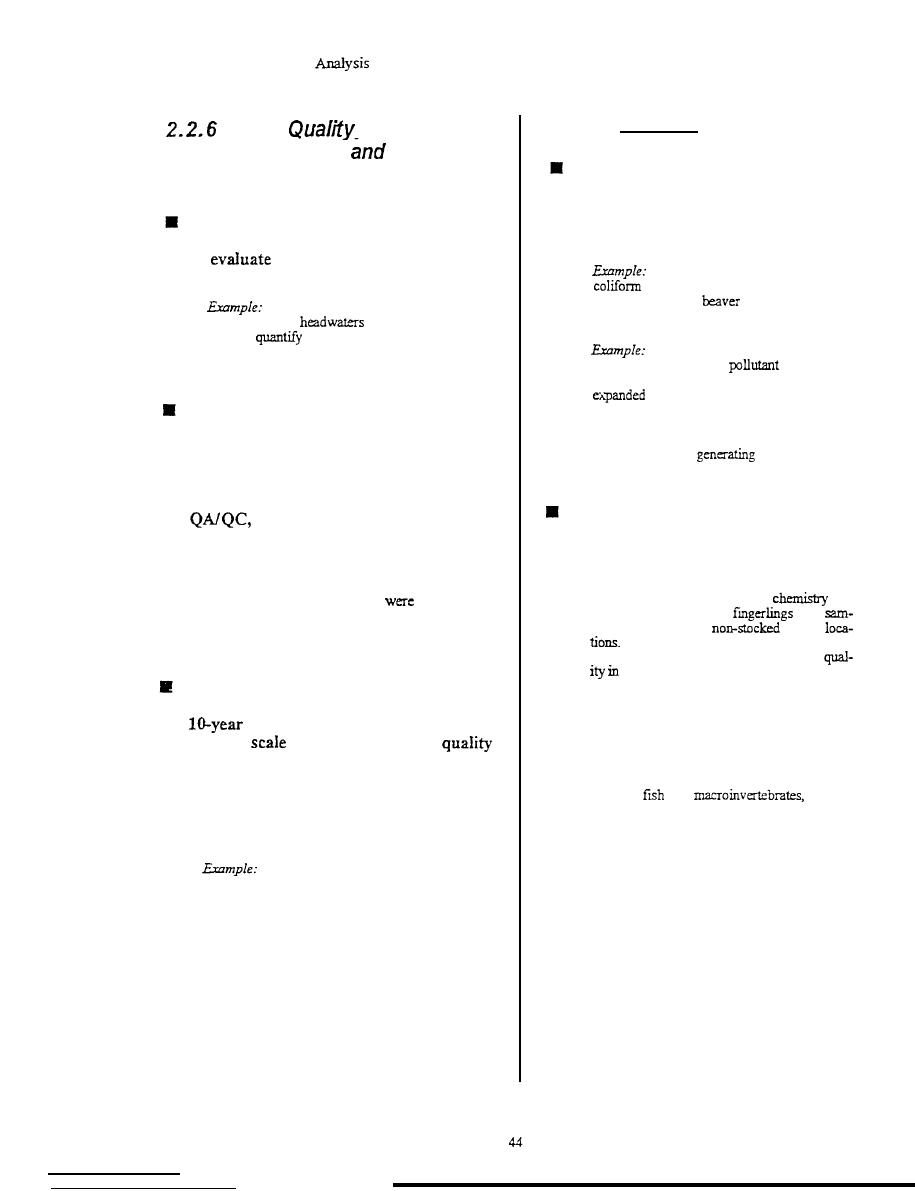
Chapter 2: Program
2.2.6.7 Variables
Wafer
Monitoring,
Evaluation,
Reporting
(continued)
Lesson: Significant land use activities
should be identified and accounted for in
the monitoring program, particularly
when such activities are located immedi-
Lesson: Reference stations characterizing
attainable conditions are needed in order
ately upstream of a monitoring station.
to
the health of aquatic biota and
In Alabama, sudden increases in fecal
habitat potential.
levels were not understood until project
personnel located a
dam upstream of the
The Idaho RCWP established refer-
monitoring station.
ence sites in the
of the watershed in
attainable conditions for trout
order to
In Idaho, non-cropland activities in the
habitat in the project area.
project area also affected
loading to the
impaired water resources. Activities included:
fish hatchery production, illegal
Lesson: The start-up date of monitoring
gravel mining, chaining the irrigation canal sys-
tems to remove unwanted vegetation, forest
should coincide with the beginning of an
tires, and the construction and operation of a
easily identified annual period to avoid
new hydroelectric
plant
partial and, therefore, nearly useless col-
lection of part of a year of data. However,
sampling
procedures,
establishing
Lesson: Direct measures that evaluate how
and data management systems is
well a water resource supports various uses
encouraged prior to the formal data collec-
(water supply, fish spawning, and habitat)
tion period.
should be used whenever possible.
Example: The Vermont RCWP project team
Example: In Minnesota, water
and
found that some of their data
unusable
spring adult trout and fall
were
because of a partial year of monitoring data that
brook
pled each year at two
did not coincide with other data
Results from the fish sampling
demonstrated more improvement in water
the fish populations than the water chem-
L e s s o n : Grab sampling conducted at
istry.
seven- or 14-day intervals over a sir- to
Example: The Idaho and Nebraska projects util-
time period can be used on a wa-
ized biological and habitat monitoring program
tershed
to document water
designs that facilitated documentation of use
changes and provide valuable feedback.
impairments and water quality improvements.
Biological and habitat monitoring included sur-
Example: The Utah, Florida and Idaho projects
veys of
and
habitat
were able to document water quality improve-
assessment, and embryo survival for trout
ments using weekly or bi-weekly grab sampling
spawning.
in their water quality monitoring efforts.
Grab sampling was an integral part of
the monitoring program in the Vermont project
Sampling bi-weekly sampling was conducted
during the summer months, sample collection
frequency decreased to monthly for the winter
months.



 Previous Page
Previous Page
